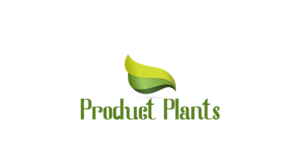The ability to properly feed pigs is the most important skill for everyone working in the pork industry. Remember that pigs need a diet that is high in calories, low in fibre, and has enough protein whether you’re looking at a piglet feeding guide or learning about swine management techniques. Pigs have an exceptional capacity for rapid food consumption. Feeding animals a nutritious, well-balanced diet from the moment they are weaned until they are slaughtered is essential for maintaining a healthy herd, maximising growth and reproduction, and increasing output.
How Much Food Should a Pig Eat?
Pigs will eat nearly everything, including bread, other cereals, vegetables, and fruits, but the best approach to keep their growth rates stable is to provide them feed that has been created specifically for pigs. For Hog Equipment Manufacture process, the right companies are to be chosen.
Dangerous Dietary Substances
Some foods should be avoided when creating your own formula for pig feeding for a number of reasons, including a slowed rate of growth and outright toxicity. Items such as those listed below are not appropriate for use in pig feed.
Sugary foods and desserts
Doggie chow
Split kernel corn
Eggs Cheese Fruits Fish Milk Cuts of Fish
That spud
Slower growth rates have been linked to a diet high in sugar, and viruses have been found in milk, meat, and fish. The chemical amygdalin is naturally present in the pits and seeds of fruits such apples, pears, apricots, and peaches. Disease, agony, and even death have been linked to amygdalin, a cyanogenic glycoside. Glycoalkaloids, a naturally occuring toxin in potatoes, may cause severe abdominal discomfort and, in rare cases, death. Solanine is present in potatoes and has been linked to anaemia, diarrhoea, and even heart failure.
Formulating a Balanced Pig Diet
Developing a high-quality feed for pigs can help your animals reach their full growth potential. Feed should provide enough calories, protein, minerals, and vitamins for the animal to grow and reproduce healthily, as well as meet its basic nutritional needs.
Grains are the most common source of nutrition for pigs since they are inexpensive and easily accessible. Feeds made from corn are the most often used because they are cheap, have a high concentration of digestible carbohydrates, and include just a little quantity of fibre. Supplementing their food with additional vitamins, proteins, and specific antibacterial compounds will help prevent the spread of naturally occuring germs that might be harmful to the animal or your stock. This is necessary so that the meal may be fortified with even more nutrients. Feeds including rice bran, broken rice, maize, soya beans, cassava, vegetables, and distillers’ residues have been shown to have a positive effect.
Pigs’ nutritional requirements
Pigs have more specialised requirements for their nutrition and water intake as they age.
Piglets should begin eating solid food while they are still nursing, a process called as creep feeding. This procedure is performed on piglets when they are under 40 pounds in weight. A pig’s food needs will become increasingly strict as it grows weight.
Conclusion
The transition from grower feeds, which are nutrient dense and contain more protein, to finisher feeds, which are less dense, should occur when a pig’s weight is between 40 and 125 pounds, and again when the pig’s weight is between 125 and market weight (about 230 pounds or more).

